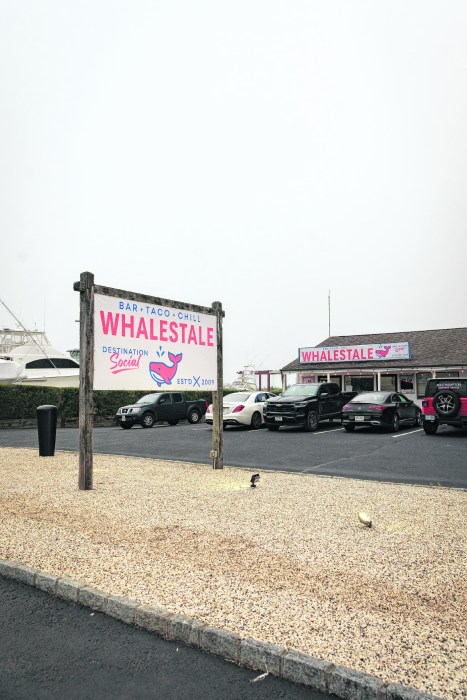The Roslyn Board of Education is conducting its review and approval of the school budget for the 2015-16 school year, the school district claims that it is an opportune time to review some the numerous measures that have been implemented over the years to increase efficiencies throughout the district, thereby reducing the burden on local taxpayers.
There are only two aspects of the fiscal management of the schools that are controlled by the Board of Education: the school budget, which is the annual spending plan, and the tax levy, which is the amount of revenue that must be collected in taxes after all other forms of revenue (e.g., state aid, grants, tuition fees) are taken in account. Roslyn has consistently kept increases in both the budget and the tax levy to an absolute minimum in recent years.
• Over the last six years, the school budget has increased by an average of 1.45 percent, even as the district has introduced many educational innovations.
• Over the same six-year period, the average increase in the tax levy has been 1.29 percent. This is as low as any other district on Long Island over this period, and a record that compares favorably with most other municipal governments, as well.
• Unlike most other schools and municipalities, the Roslyn School District was in compliance with the 2 percent tax cap for several years before it was even mandatory (the annual limit is nominally 2 percent, though exemptions and other factors result in a variable limit every year in every district). Roslyn has been well below the tax cap limit every year since it was imposed by New York State.
• There has been much talk recently about local mayors working to purchase goods and services together to lower costs to their taxpayers. In fact, the Roslyn School District has a very long history of collaborating with other school districts and municipalities to buy goods and services at lower cost through cooperative purchasing agreements and other initiatives. Savings in this area include:
• Leading the effort to provide more cost-effective busing services for children in cooperation with other Nassau County school districts, saving Roslyn taxpayers over $75,000 in 2014-15 alone.
• Entering into intermunicipal agreements with other school districts and municipalities to provide services and purchase equipment and supplies jointly and at lower cost to taxpayers. Some examples include sharing special education services with neighboring districts, buying bus parts cooperatively with other districts, utilizing BOCES services wherever appropriate and effective, and various shared services with the Town of North Hempstead.
• Offering a wide range of special programs, such as the Hilltop Academy, that attract tuition-paying students from other school districts in the area. This initiative delivers high-quality educational services while expanding our cost-saving partnerships with other school districts and significantly defraying the cost of providing these services to Roslyn School District students. All told, such programs have generated over $7 million in revenue over the last seven years.
• The Roslyn School District has taken advantage of lower interest rates to periodically refinance its outstanding debt. The last such refinancing will save local taxpayers more than $1.5 million dollars over the life of the bonds.
• Roslyn’s prudent fiscal management and allocation of reserve funds has been an important factor in the district’s ability to keep the tax levy steady from year to year, as well as to schedule repayment of bond debt with significantly reduced impact on annual tax bills.
• The Roslyn School District, by staying well below the tax levy limit, has made it possible for district residents to qualify for a property tax refund from the state (equal to the increase in their tax bill from 2013-14 to 2014-15, or 1.46 percent of last year’s tax bill, whichever is larger).
“All of the above has been accomplished while continuing to improve the quality of education that our children deserve,” district officials state.
The Roslyn School District was the pioneer in rolling out our iPad initiative as recognized in The New York Times in January 2011.
“We continuously have adapted our curriculum to the changing educational landscape and an assessment of the skills that our students will need to thrive in today’s world,” school officials further said. “We have rolled out a key initiative with Teachers College, and we have not cut any extra-curricular programs (sports or clubs). We have a graduation rate of virtually 100 percent year in and year out. Our students continue to perform at the highest levels as reflected most recently by our four Intel semi-finalists (the highest number on Long Island) and our Intel finalist. And lastly, our college acceptances are the envy of other school districts.”
While economic conditions are improving, the Roslyn School District remains committed to bringing to the voters a budget for 2015-16 that is as fiscally responsible as those of recent years. The voters’ strong support for the bond referendum last May is seen by the board of education and administration as not merely an endorsement of the school district’s plans, but also as a vote of confidence in the school district’s commitment to exercising budgetary restraint in all circumstances.
In February, the Roslyn Board of Education began its annual series of public meetings about the school budget for next year. Long before the voters go to the polls across the state on May 19, there is an extensive review and discussion of the proposed budget. District administrators will review ongoing and proposed initiatives. Input from community residents is welcome at all of these public sessions, which take place at Roslyn High School.
Visit the Roslyn Schools website at www.roslyn schools.org and go to the Budget 2015-16 page in the Business & Finance section of the website for a schedule of ongoing budget presentations.
—Courtesy of the Roslyn School District































